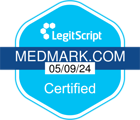Methadone serves as the addiction field’s gold standard for medication-assisted treatment (MAT) for treating opiate addiction. If you plan to enter a MAT program or know someone who participates in one, you may wonder how patients take this medication. Treatment with methadone goes beyond taking a pill every day. It involves many safeguards and much professional support to help the patient stay committed to treatment.
About Methadone
The field of opioid use disorder treatment has more than 50 years of history of using methadone to relieve withdrawal symptoms. A patient participating in MAT can take methadone to feel fewer physical effects as they reduce their dependence on opioids. As a full opioid agonist, methadone activates your opioid receptors to satisfy the brain’s need for opiates. You will work with your doctor as they make adjustments to the dosage amount prescribed to find a level that relieves withdrawal symptoms to avoid illicit opioid use.
Patients who participate in methadone-based MAT also participate in counseling and social support programs. Methadone lessens the impact of withdrawal symptoms, so you can focus on the emotional and social aspects of your condition. Research shows that methadone maintenance treatment could have success rates as high at 90%.
Forms of Methadone Taken for Opioid Use Disorder Recovery
Opioid Treatment Programs administer methadone medication to their patients to help them stay compliant with their treatment plans with the goal of avoiding illicit opioid use or non-prescribed use. Doctors can prescribe methadone as a tablet or a liquid solution. They prescribe the oral tablet form, or a pill taken by mouth, to people who frequently take it for pain. Meanwhile, opioid use disorder clinics predominantly administer methadone as a liquid. Nursing staff can dissolve some forms of methadone in water or juice or provide methadone that already comes as a liquid. Treatment centers use liquid forms for two reasons:
- Precision: Like other pill medications, manufacturers make methadone tablets in size intervals. Since a clinic doctor prescribes methadone based on the patient’s needs, not every available size will fit the situation. A clinic staff member has precise control over the amount of liquid methadone administered, letting the patient get the exact amount they required.
- Safety: Providing methadone in a liquid form also reduces the risk of diversion. Patients who struggle with relapse may feel tempted to take methadone outside of the clinic to use it for purposes outside their treatment plan. Liquid methadone reduces this risk and helps patients focus on treatment.
At the beginning of most methadone treatment plans for opioid use disorder, the patient visits their clinic daily to take medicine. These appointments give them extra support and structure as they get used to recovery and allow the medical staff to more closely manage progress. They also give clinic staff more opportunities to check patients for side effects and other symptoms. Under federal and state law, some patients can earn take-home privileges as they progress through recovery.
Methadone-Based MAT at Medmark Treatment Centers
If you or a loved one has opioid use disorder, we can assist in a judgment-free environment. Our confidential and compassionate treatment methods encourage our patients to stay on track with methadone treatment. For more information or to schedule an appointment, we welcome you to contact our team online or call us at 866-840-6658.



